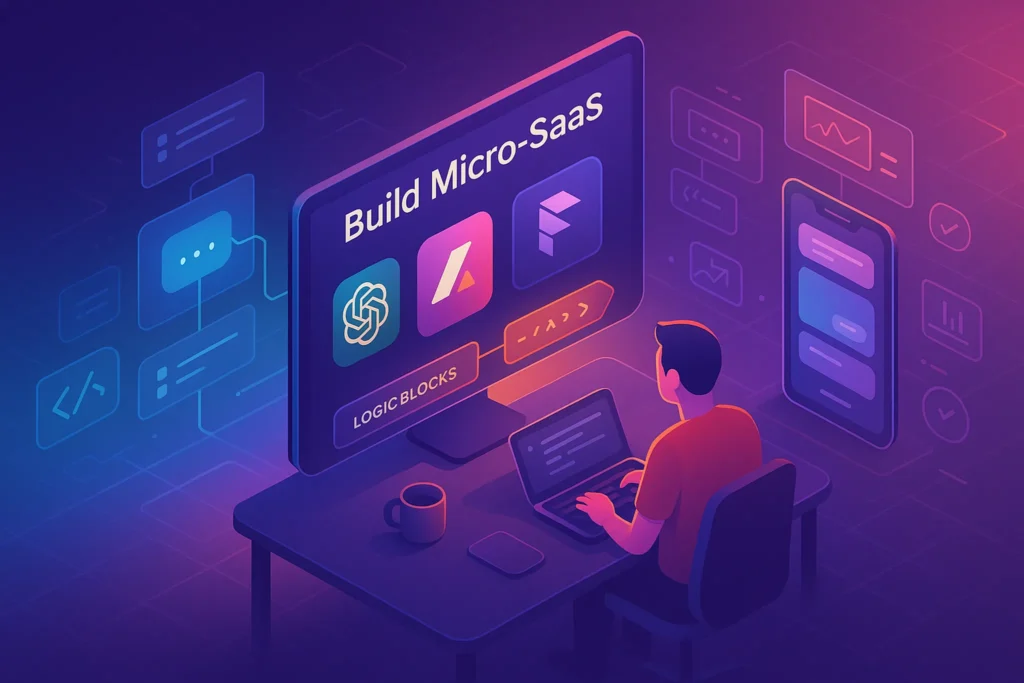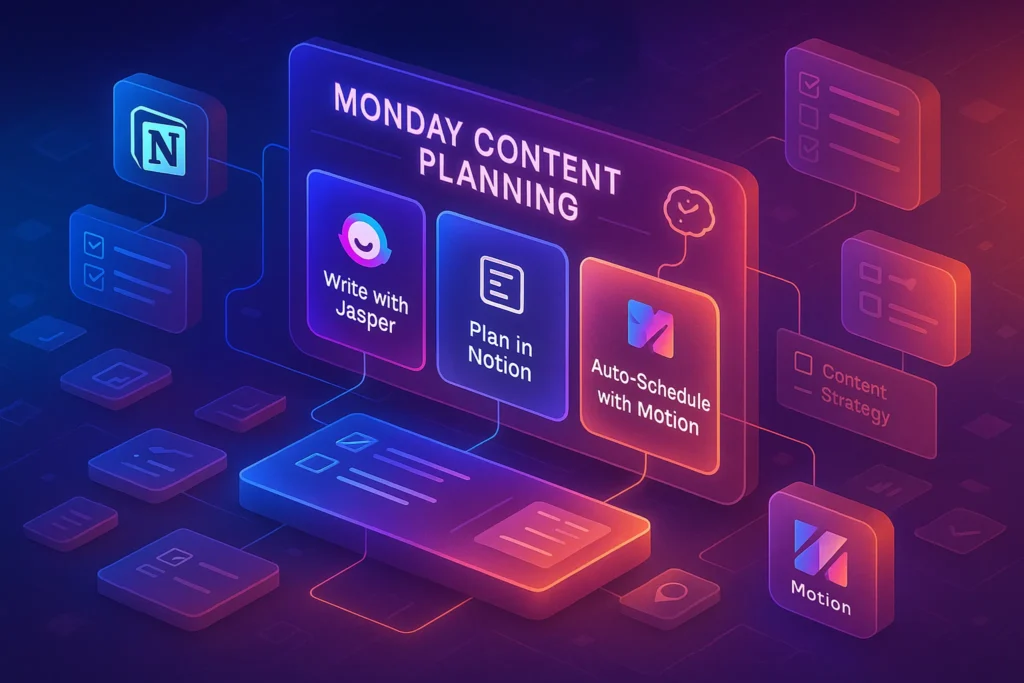🎯 Intro: Why Professional Voiceovers Were Always Expensive
For years, voiceover was one of the most expensive bottlenecks in content creation. Hiring professional voice actors meant long turnaround times, expensive recording studios, and constant revisions. A 2-minute explainer video could easily cost $500–$1,000 just for the narration. Content creators had to make a tough choice: either cut corners with robotic text-to-speech (TTS) or pay premium fees for natural voices.
That old trade-off is rapidly disappearing. In 2025, AI voiceover tools are giving creators human-like voices at a fraction of the cost and time. The shift isn’t subtle—it’s transformative. Content creators on YouTube, podcasters, and e-learning platforms are now producing polished audio in hours instead of weeks.
💡 Nerd Tip: Think of AI voiceovers not as replacing humans, but as unlocking scalable creativity where budget or time once held you back.
Voice is just one layer of the modern content stack. Many creators are already using Best AI Writer Tools to generate scripts, blog outlines, and social captions, then feeding those directly into AI voiceover platforms. This integration shortens the creative pipeline from idea → script → narration, making it possible for a single creator to publish at the scale of a small studio. By pairing written content with natural-sounding AI voices, brands can multiply distribution across video, audio, and text channels without losing cohesion.
🤖 What Are AI Voiceover Tools?
AI voiceover tools use advanced machine learning models to synthesize speech that sounds convincingly human. Unlike the robotic TTS systems of the 2000s, these new solutions rely on deep neural networks trained on thousands of hours of real human speech. The result? Voices with natural intonation, pauses, and emotional variety.
The difference is striking. Traditional TTS produced flat and mechanical delivery, with no ability to capture emotion. In contrast, AI-powered voices today can whisper, emphasize, and even laugh. Some platforms allow creators to fine-tune tone, pitch, and pacing to match the exact personality of their brand.
This matters because content is no longer judged only on visuals or words—it’s judged on how it sounds. An engaging, human-like voice keeps audiences hooked, whether in a podcast, product demo, or video ad.
🔑 Core Features to Look For in AI Voiceover Tools
When choosing the right AI voiceover platform, not all features are equal. Content creators should prioritize flexibility and authenticity.
First, look at language and accent variety. Global audiences expect localized voices. A creator making explainer videos for European markets, for example, may need British, French, and German narrations. Next, consider emotional tone control. A flat narration may work for an audiobook, but an ad needs enthusiasm and persuasion.
Equally important are speed and pitch adjustments, which allow creators to adapt the flow for fast TikTok reels or slower corporate tutorials. Finally, seamless integration with video and podcast editors is crucial. A platform that exports directly into Adobe Premiere or Descript saves hours compared to manually syncing audio files.
💡 Nerd Tip: The best tool isn’t just the one with the most voices—it’s the one that fits smoothly into your workflow.
🏆 Best AI Voiceover Tools in 2025
Several platforms dominate the AI voiceover space in 2025, each with strengths tailored to different use cases.
🎤 Murf.ai — A Collaborative Voiceover Studio for Fast, Polished Output
What it’s for:
Murf.ai is built for creators and teams who want a clean, end-to-end workspace to draft scripts, shape voice tone, tweak pacing and pitch, and export audio that drops straight into video timelines. Think of it as a lightweight voiceover production studio in your browser: you can manage scripts, mark emphasis, test different voices, and align narration with slides or b-roll without jumping across five apps.
Why use it:
Use Murf when speed and collaboration matter as much as quality. If you’re publishing consistently on YouTube, building training modules, or producing explainer videos for clients, Murf’s editor reduces friction—no messy file handoffs, fewer version-control headaches, and faster approvals. It’s also strong when you need a dependable, brand-safe narration that sounds professional and consistent across a large library of videos.
Pros (in plain English):
Murf balances realism with stability. The voices are clean, articulate, and rarely produce odd artifacts, which makes it great for corporate learning, product demos, and channel intros. The editor is intuitive, and the ability to fine-tune pronunciation, pacing, and pitch within one timeline keeps your workflow efficient. Teams appreciate how easy it is to review, comment, and re-render variations without re-engineering the whole project.
Cons (nuanced):
While Murf sounds natural, it’s not the most expressive when you need high-drama reads or nuanced character acting; you’ll notice a ceiling in emotional dynamism compared to top-end cloning tools. Some advanced prosody controls feel “coarse” if you’re chasing hyper-granular performance. If your primary need is raw creative range or custom character voice design, you may outgrow Murf and lean on a more expressive engine.
Best fit: YouTube explainers, SaaS product demos, course narration, corporate training, agency deliverables where repeatability and speed beat flamboyant acting.
💡 Nerd Tip: Save a “voice recipe” (tone, speed, emphasis patterns) for your brand, then reuse it per series to lock in sonic consistency across episodes.
🎤 Play.ht — Long-Form Narration at Scale with a Huge Voice Library
What it’s for:
Play.ht shines when you need lots of narration across multiple languages and accents—podcasts, audioblogs, e-learning modules, and documentary-style YouTube content. Its core strength is long-form generation that maintains consistent timbre and pacing over 10–30+ minutes without sounding stitched together.
Why use it:
Use Play.ht if your editorial calendar is packed and you need volume without sacrificing clarity. The library is extensive, so it’s easier to match tone and region (e.g., US/UK/ANZ English, European languages) and keep brand resonance across markets. If you’re repurposing written content into audio—like turning a blog series into a narrated playlist—Play.ht reduces setup time and keeps your cadence uniform.
Pros (in plain English):
You get breadth and durability: many voices, many languages, and reliable long-form continuity. SSML and emphasis controls are there when you need them, yet you can also keep it simple and just hit “generate.” For content factories—news recaps, tutorial series, course lessons—the throughput-to-quality ratio is excellent.
Cons (nuanced):
Quality varies by voice; a handful feel a touch “too perfect,” which can read as less human in casual formats. Emotional expressiveness exists but isn’t as granular as the best voice-design or cloning engines. The large catalog can mean extra curation time to find “your” signature voice, especially if you’re picky about micro-intonation.
Best fit: Audioblogs, podcasts intros/outros, e-learning chapters, multilingual content libraries, narration for documentary-style videos.
💡 Nerd Tip: Build a “voice palette” of 3–4 vetted voices mapped to content types—e.g., calm for tutorials, upbeat for promos, conversational for news—so your team never starts from scratch.
🎤 WellSaid Labs — Enterprise-Grade Realism for Polished, Premium Narration
What it’s for:
WellSaid Labs targets teams that need top-tier realism with broadcast-ready clarity—brand videos, ads, onboarding series, investor updates, and executive comms. It leans into professional-sounding North American English with exceptional diction, natural pauses, and persuasive cadence that feels like a trained voice actor.
Why use it:
Choose WellSaid when you’re producing high-stakes content where vocal credibility equals brand credibility. If your viewers expect “agency-produced” polish—or you’re replacing expensive studio sessions—WellSaid hits that premium feel with less cleanup in post. It’s especially strong for sales enablement, product launches, and brand storytelling where tone and pacing are central to persuasion.
Pros (in plain English):
Out-of-the-box reads sound convincingly human, even in nuanced business tones: confident, empathetic, authoritative. You’ll do less retiming, fewer take-two renders, and minimal de-essing/EQ cleanup. For script-driven marketing assets, it often passes the “is this a human?” test for most listeners.
Cons (nuanced):
Its sweet spot is English, especially North American; if your roadmap demands deep multilingual variety, you may supplement with another tool. It’s also positioned as a premium solution, so budget-sensitive indie creators may find it overkill for simple tutorials. If you want experimental character voices or sci-fi personalities, you’ll be constrained compared to open-ended voice design tools.
Best fit: Brand films, ads, product launches, executive updates, investor decks, enterprise L&D where polish and trust dominate.
💡 Nerd Tip: For persuasive scripts, write in short, spoken-friendly lines and include stage directions like “(confident pause)” or “(smile)”—WellSaid’s realism amplifies strong copy.
🎤 ElevenLabs — Expressive Voice Cloning & Design for Signature Sonic Branding
What it’s for:
ElevenLabs is the creative lab of voice. It’s ideal when you want a signature, ownable sound: clone your voice (with proper consent), design a new character, or dial in expressive reads that breathe, emphasize, and react more like a seasoned narrator. If you produce personality-led content—YouTube commentary, narrative shorts, fiction podcasts—it lets you push beyond “neutral corporate” reads.
Why use it:
Use ElevenLabs to scale a recognizable voice brand. If you’re the face of your channel but can’t record every day, a compliant clone keeps output high without losing your identity. For storytelling, you can sculpt emotional arcs—subtle shifts in warmth, urgency, or irony—so scenes feel alive rather than “read.”
Pros (in plain English):
Best-in-class for expressive control and identity continuity. With careful prompting and versioning, you can get performances that lean into emphasis, humor, and dramatic pacing. Multilingual support is strong, and the ecosystem is creator-friendly for indie channels, podcasters, and storytellers who experiment a lot.
Cons (nuanced):
Cloning comes with ethical and legal responsibilities: you need explicit consent and strong governance to avoid misuse. Because it aims for high expressiveness, you can occasionally encounter artifacts or “over-acting” if scripts or settings are off—expect a short learning curve to find the sweet spot. If your use case is strictly corporate narration with predictable tone, this flexibility may be more than you need.
Best fit: Personality-led YouTube, narrative podcasts, character work, branded “host” voices, multilingual channels that want a consistent sonic identity.
💡 Nerd Tip: Treat your cloned voice like a product—version it, document ideal settings, and keep a small “test script” you rerun after updates to ensure consistency over time.
🎤 Synthesia Voice Module — Voice + Avatar for End-to-End Course & Comms Videos
What it’s for:
Synthesia’s voice module pairs tightly with its AI avatars and templated video composer. It’s engineered for teams who want to go from script → finished video (with presenter) without cameras, mics, or editing timelines. If you ship lots of training, product walkthroughs, or internal comms, you get narration and on-screen delivery in one pipeline.
Why use it:
Choose Synthesia when your end product is video-first and repeatable: onboarding sequences, HR updates, product releases, multi-language training. The voice module is good on its own, but its real advantage is lip-synced avatars, scene templates, and branding controls that make it trivial to localize an entire course into five languages in a week.
Pros (in plain English):
You collapse three separate workflows—voice, presenter, and editing—into one. The output looks and sounds consistent, which lowers production risk and speeds up stakeholder approval. For L&D and ops teams, it’s a force multiplier: one approved script can generate multiple localized presenter videos without new shoots.
Cons (nuanced):
As a standalone voice generator, it’s not the most expressive or tweakable at the micro-prosody level; the power is in the all-in-one pipeline. If you only need audio-only voiceovers, dedicated VO tools may be more cost-effective. Creative storytellers who want eccentric characters or extreme emotional range will feel boxed in.
Best fit: E-learning, product walkthroughs, internal comms, policy/training rollouts, how-to libraries that must scale globally in consistent formats.
💡 Nerd Tip: Script for the screen, not just the ear—write short, on-camera-friendly lines and use visual cues in scenes. You’ll get crisper pacing and better retention.
Quick Selection Guidance (plain-language, not a listicle)
If your priority is fast, reliable production with an editor your whole team can use, start with Murf.ai and standardize a couple of brand voices. If you’re publishing long-form narration across languages and need throughput with consistency, Play.ht gives you breadth without breaking flow. When the stakes are high and polish must equal broadcast quality, WellSaid Labs delivers the most “agency-grade” feel. If your channel or show depends on a recognizable persona or character, ElevenLabs is the most creative and expressive path, especially with compliant voice cloning. And if your real deliverable is complete videos with a presenter, not just the audio, Synthesia compresses the entire pipeline—voice, face, and edit—into one tool.
💡 Nerd Tip: Start with one tool that fits your main content type, then expand to others if your audience requires more variety.
🎬 Use Cases for Content Creators
AI voiceovers are not just for faceless explainer videos—they’re reshaping multiple industries. On YouTube, creators use AI narration to push out consistent content without waiting for freelancers. In podcasting, AI tools handle intros, ads, or even entire episodes when budgets are tight.
E-learning platforms are also seeing a boom. Instead of hiring 20 different narrators for multilingual courses, teams use AI to roll out global content within days. Similarly, advertisers are cutting costs dramatically by using AI voices for promo spots.
Podcasters in particular are embracing AI voiceovers to streamline production, but narration is only one piece of the workflow. To really cut editing time and get shows distributed efficiently, creators often combine voice generation with Top AI Podcast Tools for Editing & Distribution. These platforms handle noise reduction, auto-leveling, multitrack alignment, and even one-click publishing across Spotify, Apple, and YouTube. Paired with AI voices, they create a complete podcasting stack where the hardest part—time-consuming editing—is no longer a bottleneck.
🎧 Want to Try AI Voiceovers Yourself?
Explore platforms like Murf.ai and Play.ht to create natural, studio-quality audio in minutes. Perfect for YouTube, podcasts, or e-learning projects.
⚖️ How AI Voiceovers Compare to Human Voice Actors
The cost difference is staggering. A human actor may charge $300 for a short narration, while AI tools can generate unlimited scripts for under $50/month. Time is another factor: humans take days, while AI delivers in minutes.
That said, emotional depth remains a key differentiator. Human actors bring unique quirks and lived experiences to a performance that AI cannot fully replicate—yet. Still, for scalable content such as tutorials or product demos, AI offers unbeatable speed.
Scalability is where AI wins outright. A creator can use the same AI voice across hundreds of videos, ensuring consistent branding without availability issues. This is particularly attractive for creators already experimenting with Top 5 AI Voice Generator Tools for Content Creators.
🚧 Challenges & Limitations
AI voiceovers are not without risks. The biggest concern is synthetic misuse—cloned voices used without consent. Ethical frameworks are still catching up, and regulations are emerging worldwide. Another issue is authenticity. Some audiences can detect the subtle difference in emotional delivery, which may reduce trust if not disclosed transparently.
There’s also the danger of overreliance. A creator who builds their brand identity solely on an AI-generated voice risks losing uniqueness if thousands of others use the same voice model. NerdChips recommends balancing AI with occasional human input for long-term credibility.
High-quality narration is crucial, but it’s not the only audio element your audience notices. Music, intros, and background scoring set the emotional tone of a video or podcast. Many creators now pair voiceover tools with AI platforms that Generate Tracks for Videos & Podcasts, allowing them to build custom soundscapes in minutes. Instead of relying on generic stock tracks, these tools generate unique, royalty-free music that perfectly matches the pacing of AI narration—whether it’s upbeat for ads or calm for tutorials.
📊 Case Study: A YouTube Channel Cutting Costs in Half
One mid-sized YouTube channel in the tech review niche reported that switching to AI voiceovers cut production costs by 52%. Previously, each video required a freelance narrator charging $200 per script. With Murf.ai, the channel now produces 15 videos per month at under $50 total.
Viewers noticed little difference. In fact, average watch time increased by 7%—suggesting that consistency and faster uploads outweighed any small drop in emotional nuance. This illustrates how AI voiceovers don’t just save money; they can directly improve channel growth.
Want More Smart AI Tips Like This?
Join our free newsletter and get weekly insights on AI tools, no-code apps, and future tech—delivered straight to your inbox. No fluff. Just high-quality content for creators, founders, and future builders.
100% privacy. No noise. Just value-packed content tips from NerdChips.
🧠 Nerd Verdict
AI voiceovers in 2025 are no longer a gimmick. They’re a serious professional option that saves time, cuts costs, and scales content production. While they won’t replace the artistry of elite human actors anytime soon, they’re already good enough to power YouTube channels, podcasts, ads, and online courses at scale. For creators balancing quality with efficiency, AI voiceovers are not just an alternative—they’re a competitive edge.
❓ FAQ: Nerds Ask, We Answer
💬 Would You Bite?
If an AI voiceover could sound 95% human, would you trust it for your next YouTube video or podcast? Or do you still feel a real voice is irreplaceable?
Crafted by NerdChips for creators and teams who want their voices heard globally—without barriers of cost or time.



